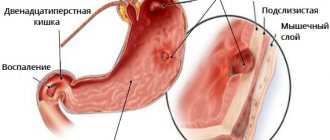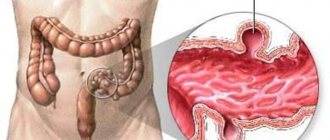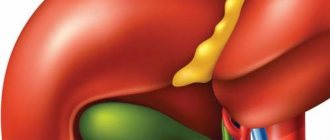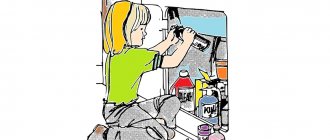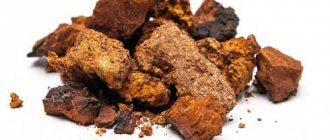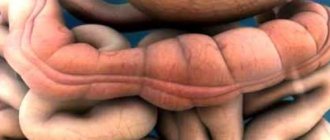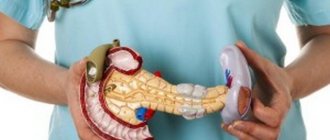Many experts argue that therapy for pathology should be carried out exclusively by surgery. On the one hand, it is impossible to remove the main cause of the pathology without surgery; on the other hand, there are many contraindications for surgical treatment.
In an infant, after removing the remainder of the umbilical cord, surgical removal of the hernia most often does not make any sense. As the baby grows, the umbilical ring strengthens and the protrusion disappears.
Surgery is necessary in cases where the hernia acquires a significant diameter. Despite this, many experts argue that even under such conditions as the existing risk of strangulation, it is possible to get rid of an umbilical hernia without surgery.
Why does pathology occur?
Umbilical hernia is a common disease in men and women, accompanied by the release of internal organs through weakened ligaments of the umbilical opening of the peritoneum. The causes of the disease are:
- genetic predisposition;
- weakness of the abdominal muscles;
- excess body weight;
- frequent physical activity, heavy lifting;
- diseases of the digestive system, causing constipation and frequent vomiting;
- prolonged cough;
- operations in the navel area.
Under the influence of the reasons described above, the patient develops a protrusion in the navel area, which is easy to notice with the naked eye.
Often the pathology is not accompanied by acute symptoms.
Sometimes a person is bothered by minor pain and discomfort, which increases with coughing and physical activity. The hernia increases with tension in the muscles of the peritoneum, and is partially or completely hidden in a horizontal position of the body.
Treatment of umbilical hernia without surgery is possible in the initial stages of the disease. In case of infringement, surgery is necessary for life-saving reasons.
Navel hernia in adults: treatment
Contrary to general belief, umbilical hernia occurs in adults, and not just in children. Complications from this disease can be quite significant. Therefore, it is necessary to be treated in a timely manner, without starting the disease.
Doctors in most cases offer surgical treatment, as well as for abdominal hernia. Patients prefer to remove the hernia without surgery. In principle, if the hernia has not been pinched and does not yet cause discomfort or pain, you can try to correct it with home remedies. But you should always remember that before starting treatment you should still consult a specialist.
general information
An umbilical hernia is a protrusion of abdominal organs through the umbilical ring. Most often, intestinal rings undergo protrusion. In children, the area of protrusion reaches 10–15 mm, in adults – up to several centimeters.
The cause of the disease may be increasing pressure inside the abdominal cavity, the pressure of which is not able to be contained by the muscles of the abdominal wall. The second reason is stretching and thinning of the muscles of the umbilical ring.
In some women, an umbilical hernia appears after pregnancy, which is understandable. After all, for several months the pregnant woman constantly supported the unborn child with her muscles.
At the first stage of the disease, a hernia does not cause discomfort. Then pain begins, accompanied by nausea.
Symptoms
The main symptom is a protrusion in the navel area, which becomes smaller or disappears when lying down. If the patient sees that the umbilical ring is widened, this is also a sign of a hernia.
During physical work or severe coughing, pain in the navel area may occur. In later stages, constipation, belching, and problems with urination occur. All these signs are a reason to consult a surgeon.
Complications
The most serious complication of an umbilical hernia is strangulation. At the same time, the pain increases sharply, nausea and vomiting appear. Strangulation leads to intestinal obstruction, death of strangulated tissues, and peritonitis. There is a threat to the patient's life. Therefore, if a person suffering from a hernia has pain, there is no talk of treatment at home. You need to call an ambulance.
If the umbilical hernia is still only bothering you with its appearance, you can resort to traditional medicine.
Treatment
It is believed that if a child or an adult has an umbilical hernia, then surgery cannot be avoided. In fact, not everything is so scary - you can try conservative treatment. Fortunately, there are many proven remedies.
Folk remedies
If a patient is diagnosed with an umbilical hernia, treatment can be carried out using traditional medicine.
Traditional methods of getting rid of an umbilical hernia are either ingestion of preparations and infusions, or applying compresses to the sore area:
- Add 6 drops of turpentine oil to 1/5 cup of milk. On an empty stomach in the morning and at night, take a couple of sips of this mixture. Apply it to the navel. It is necessary to be treated for 10 days. If necessary, take a break for a week and repeat the course again.
You can combine compresses with taking recommended herbs and mixtures internally.
If such treatment does not completely remove the umbilical hernia from the patient, then at least it will prevent the disease from developing.
Bandage
If surgery is contraindicated for the patient to prevent strangulation of the umbilical hernia, the doctor advises wearing a bandage. This is a special belt that prevents the prolapse of internal organs into the hernial sac by closing the hernial opening. They also prevent the hernia from enlarging and strangulating.
Bandages are selected according to size. They are worn under outer clothing, securely hidden from prying eyes and do not cause any complexes in the patient. Bandages are convenient because:
No discomfort is felt when wearing an anti-hernia bandage.
Massage and gymnastics
For patients for whom surgery is contraindicated, the doctor will prescribe massage as an effective means of eliminating an umbilical hernia. It will be convenient if a family member (or better, if a professional) gives the patient a massage; doing it yourself will not lead to such a good result.
Three main movements:
- Stroking the abdomen in the area of the hernia clockwise.
- Pinching of the painful area, but not strong.
- Rubbing the muscles in the hernia area.
If you combine massage with gymnastics, the effect will be even greater. Gymnastics is useful for patients who do not suffer from heart pathologies. It should not be done during periods of increased body temperature. You cannot strain too much, otherwise the effect will be negative.
Basic physical therapy exercises for removing an umbilical hernia:
Pregnant women should pay special attention to ways to eliminate an umbilical hernia without surgery. They need to wear a brace.
Hernia reduction
For young children, a specialist at the clinic will repair the hernia with his finger, after which the skin around the navel will be tightened and sealed with an adhesive plaster for several days. After 5–7 days, the procedure is repeated. Thus, the hernia is gradually reduced, but to strengthen the muscles and their ability to hold the internal organs in their proper place, it is necessary to carry out more than one course of massage and exercises.
For adults suffering from umbilical hernia, there is a procedure that is similar in meaning. A ball of woolen thread is placed on a flat surface. The patient lies down on it so that the ball is under the navel. This is a painful procedure, but the pain will go away when the hernia is reduced. To prevent it from appearing again, you need to wear a bandage.
Laparoscopic method
Laparoscopic hernioplasty is essentially an operation without a scalpel. Instead of incisions, only microscopic punctures are made. All work is done through them using modern medical equipment.
This operation lasts only 1 hour. Therefore, the patient does not need to undergo anesthesia for a long time. The muscle tissue is practically not injured, so the pain is minimal. There are no scars on the body.
Recovery after laparoscopic hernioplasty takes 2 days. There are no recurrences of the hernia because during this operation a synthetic patch is placed in the abdominal cavity.
Surgical treatment
In some cases, traditional methods and massage with exercises will not help. These include hernias:
- Repeatedly dropped out (recurrent).
- Irreversible.
- Proboscis.
This also includes the following cases:
- Old age of the patient.
- Obstruction of feces in the intestines.
- Intestinal strangulation.
- Spikes.
- Thinning of the umbilical skin, leading to rupture of the hernial sac.
If the patient experiences severe pain, blood in the stool, vomiting, or constipation, you should immediately consult a doctor.
Prevention
It is much easier to prevent a disease than to treat it later. The most effective way to prevent an umbilical hernia is to wear a bandage. It is usually worn by pregnant women. But all other people should wear a support belt when planning to engage in physical labor or before lifting weights. Any surgeon will agree to prescribe it for you if you tell him about the constant need to lift weights or do other physical labor.
Preventive measures include daily physical exercise to strengthen the abdominal muscles. There is no need to do exercises with maximum load, this can cause harm. Regular morning exercises will give an amazing effect.
It is a good idea to conduct massage courses from professional massage therapists from time to time, if there are no contraindications to such procedures.
Proper nutrition is of great importance. You need to control your weight and fight obesity. Being too thin won't do any good either.
In what cases is conservative treatment indicated?
Treatment without surgery for the development of an umbilical hernia is carried out in the following cases:
- Early diagnosis of pathology.
- Possibility of reduction of protrusion, absence of adhesions.
- Uncomplicated course of the disease.
- The presence of serious contraindications to surgical intervention.
- Small size of the formation.
- Minimal risk of complications.
Conservative therapy is also indicated for pregnant women, patients with diabetes, and people suffering from serious neurological diseases.
Indications for surgery and types of interventions
Treatment of umbilical hernia in adults with conservative methods is possible, but they provide a temporary effect.
Indications for which surgical intervention is required:
- intestinal obstruction, accompanied by intoxication of the body, vomiting. In such a situation, emergency surgery is required due to the high risk of sepsis, blood poisoning, peritonitis, necrosis of intestinal tissue structures;
Types and purposes of non-surgical therapy
The main goals of conservative therapy include:
- Reduction of hernial protrusion.
- Strengthening the abdominal muscles.
- Providing conditions to prevent re-protrusion.
- Elimination of complications.
To achieve these goals, an integrated approach is used, including the following methods:
- use of medications;
- physiotherapy;
- massage;
- nutrition adjustments;
- wearing a bandage;
- use of traditional medicine.
Non-surgical treatment of umbilical hernia in adults and children begins after diagnosis under the supervision of the attending physician.
Drug treatment
Is it possible to get rid of a hernial protrusion with the help of medications? Complete cure of pathology with the help of pharmacological drugs is impossible. Medicines are used to alleviate the patient’s condition and eliminate the main symptoms of the disease. The use of medications depends on the manifestations of the pathology:
- Pain syndrome can be removed with the help of antispasmodics. No-shpa, Baralgin, Spazmalgon tablets are used.
- If constipation occurs, medications that have a laxative effect will help. These include Regulax, Senadexin, Laxatin.
- If the patient experiences nausea, antiemetic medications may be prescribed. For this, Doprokin and Motinol are used.
- If you have heartburn, the patient is advised to take acid-reducing medications. These are medications such as Famo, Domidon, Itomed.
The drugs must be prescribed by a specialist. It is strictly not recommended to self-medicate an umbilical hernia based on advice on forums on the Internet.
Massage
Massage is an effective method of treating umbilical hernias in children and adults. The procedure helps strengthen the abdominal muscles, improve blood circulation, and restore muscle tone and skin. Massage techniques help improve the functioning of the digestive system, relieve the patient from constipation, and improve overall well-being.
The following techniques are used to treat hernias:
- Slow stroking in the area where the navel is located. Movements are carried out clockwise. The exercise is repeated for 3-5 minutes.
- Tingling in the area around the navel. This procedure stimulates blood circulation and causes involuntary contraction of the abdominal muscles. As a result, tone increases, tissue metabolism improves, and muscles become stronger.
- Rubbing the abdominal muscles - exercise has a positive effect on gastric motility and strengthens muscle fibers.
The massage must be performed by a specialist. The session is carried out in a hospital setting or at home.
Contraindications
In 90% of cases, surgery to eliminate an umbilical hernia is the fastest and most effective method of treatment. There are conditions that require emergency surgical care:
- if the hernia constantly recurs during conservative treatment;
- if the protrusion has become impossible to straighten independently in a horizontal position;
- when the protrusion has increased in size, it has a trunk-like shape;
- when the adhesive process has begun;
- when a loop of intestine is strangulated or there is a threat of rupture of the hernial sac;
- if you have difficulty with bowel movements or passing gas;
- when blood appears in the stool.
In these cases, you must immediately seek medical help, because delay is fraught with serious complications - from intestinal obstruction to peritonitis with a fatal outcome.
An umbilical hernia causes pain, discomfort, and does not look aesthetically pleasing. However, you can get rid of it forever. There are conservative and surgical treatment methods for children and adults.
Physiotherapy
How to cure an umbilical hernia without surgery using physical therapy? Gymnastics is of great importance in the treatment of the disease. The patient should perform the first exercises under the supervision of a trainer. A specialist will help you perform gymnastics correctly, which will minimize the risk of complications.
The treatment complex contains exercises aimed at strengthening the abdominal muscles:
- In a lying position, hands behind the head, the patient raises his straight legs above the floor for 5 seconds, then they should be lowered and relaxed. 5 approaches are performed.
- Lying on your back, hands behind your head, lift your shoulders off the floor, hold for a few seconds, return to the starting position. Do 5 approaches in total.
- Sitting on a chair, turn your body to the left, pause, and return to the starting position. Perform a turn in the other direction. The exercise is repeated 5 times in both directions.
- Lying on the floor, raise your straight legs and make movements that imitate the work of scissors. Each approach is 10 seconds, perform 5 approaches.
- Lying on your back, stretch your right elbow to your left knee, hold for a few seconds, change your arm and leg. The exercise is repeated 5 times.
In the future, the patient will be able to perform physical exercises independently at home. As the muscles strengthen, the load can be increased.
Performing exercises is strictly prohibited if the protrusion is painful or if your health condition is deteriorating. If pain or discomfort occurs during exercise, gymnastics should be abandoned.
Methods for treating an umbilical hernia in an adult patient without surgery
Some believe that only a child can be subject to such a pathology as an umbilical hernia. In fact, the disease also occurs in adult patients. Moreover, if in children the treatment consists of wearing a bandage and performing a massage, then in adults the main method is surgery. At the same time, the presence of heart pathology, the patient’s serious condition, or infectious diseases may be a contraindication to intervention. In such a situation, a reasonable question arises: how to cure an umbilical hernia without surgery? Before answering this question, you should find out what pathology is.
Surgery is not always used to treat an umbilical hernia.
Causes and symptoms of hernia
A hernia is the prolapse of parts of organs through a ring in the navel area. The hernial sac can be of any size. The cause of the pathology is weakness of the muscle layer. In addition, it is important to emphasize that the navel is not covered by fatty tissue, therefore, when increased pressure occurs, the defect occurs in this area. In men, the disease is less common, but it cannot be excluded. In addition, the reasons for the formation of a defect often differ.
In women, pathology is especially often detected during pregnancy. This is explained by the fact that the growing uterus puts pressure on the internal organs and displaces them. Stretching the muscles due to the expanding abdomen is also important. In men, the provoking factor is often heavy lifting, excessive stress, and so on.
The clinical picture of the pathology is similar for both women and men. With increased loads, there is pain in the navel area, the deterioration of the condition is especially noticeable after prolonged coughing, straining to defecate, as well as in case of impaired intestinal function, accompanied by excessive gas formation.
Pregnancy is one of the reasons for the development of umbilical hernia
The danger of the pathology is that over time, adhesions form in the ring area. They bind the tissues of the sac and ring, preventing the hernia from returning to its original position. This ultimately leads to infringement. The condition is dangerous due to tissue necrosis and peritonitis, and therefore requires emergency surgery.
If you pay close attention to your health, in some cases it is possible to treat an umbilical hernia without surgery, but with constant monitoring by a doctor. Its goal is to increase muscle tone, which helps reduce the umbilical defect and prevent the enlargement of the hernia.
Only a doctor after a full examination can answer the question of whether it is possible to independently cure a hernia without surgery in your particular case.
Conservative treatment methods
The presence of abnormalities such as heart failure, kidney pathologies, or an acute infectious process can cause treatment of an umbilical hernia in adults without surgery. In such a situation, first of all, wearing a bandage is prescribed. This is the method used to treat hernia in children.
You can cope with a hernia using a special bandage
The idea is that during the day the patient wears a special belt with an overlay in the area of protrusion, which eliminates pinching and growth. For this purpose, a special bandage is used, selected individually. In some cases, it is necessary to make a custom-made belt. It is possible to replace the bandage with special underwear. But still, for men, it is the bandage that will be more effective. But if an umbilical hernia is detected in women during pregnancy, treatment without surgery, first of all, includes choosing underwear designed specifically for this period.
The next effective method is massage. It involves gently stroking the skin around the navel. Next, you should make several pinching movements over the entire surface of the abdomen. At the next stage, vigorous rubbing is performed and the massage ends with gentle stroking. You can perform this massage every day, but it is important to remember the contraindications:
- elevated temperature;
- heartache;
- acute infectious process;
- skin rashes;
- pain in the hernia area.
Properly performed massage, observing contraindications, can improve the condition of a hernia.
Treatment of an abdominal hernia with massage begins only after visiting a doctor, as a result of which contraindications will be excluded.
ethnoscience
When trying to get rid of an abdominal hernia without surgery, you can try traditional medicine. At the same time, these methods should be used with the permission of a doctor, and treatment should be especially careful, since any herb can cause an allergic reaction. So, the following recipes will help to remove an umbilical hernia without surgery, as well as eliminate all unpleasant symptoms:
- It is necessary to collect plantain seeds. They are consumed half a spoon every hour. The substances that make up the plant have a positive effect on connective tissue, which allows you to cure the pathology in just three months.
Plantain seeds are effective in the fight against hernia.
- A large onion should be baked and cooled. Next, it is cut into two parts and applied to the problem area. Leave the onion in this position for three hours. Due to this, symptoms such as pain and nausea will go away. The procedure should be repeated daily.
- Red clay allows you to provide nutrients to tissues. To do this, a small amount of powder should be mixed with water to the consistency of a thick paste. The cake is applied to the skin and secured with a belt.
- Oak bark is used quite often. It quickly eliminates the symptoms of pathology, reducing pain and spasm. To do this, the bark is boiled and the resulting composition is used to rinse the skin.
- A mixture of propolis, honey, iodine and oil has an excellent effect. The mixture has the consistency of an ointment, which allows it to be applied to the skin. Leave for up to six hours, after which the composition is washed off.
Oak bark will help relieve pain
When using traditional methods, it is important to regularly see a doctor to assess the condition. In addition, if new signs appear for you, for example, thickening of the hernia, pain in its area, you should immediately visit a specialist in order to exclude complications.
Compresses for treatment
The hernia forms on the surface, so local treatment will have a good effect. Folk recipes are also used here and, first of all, oak and hernia. A concentrated decoction is prepared from the selected raw materials. Next, gauze is moistened in it and applied to the problem area. Paper and a belt are fixed on top. The hernia uses herbs, so it can be applied to the skin after boiling in a minimum amount of water. This will have a positive effect on blood circulation in the problem area and accelerate tissue regeneration. In addition, alternating a decoction of oak and hernia helps prevent the growth of a hernia and its pinching.
Important: with the permission of a doctor, decoctions can be taken orally according to an individual regimen, which also has a positive effect on the condition of the tissues.
One of the ways to cope with a hernia is compresses based on hernia decoction.
In addition to the above, you can make a compress with oak bark tincture. To do this, the raw materials are infused for three weeks in red wine in a dark place. To increase efficiency, you can add not only bark, but also acorns. After the tincture is ready, use it for compresses.
Physiotherapy
To avoid having to remove the hernia through surgery in the future, you should pay attention to physical activity. It is thanks to them that it is possible to strengthen muscles and improve blood circulation. The load is determined individually, but even for men it should be moderate. In addition, it is recommended not to start exercising on your own, but to visit a physiotherapy office and find out whether it is possible to cure a hernia using only exercise therapy.
The following exercises have a positive effect on the condition of patients with this disease.
| Initial position | Execution technique |
| Lying on your back. Legs straightened. | We bend our back as much as possible. Repeat 10 times. |
| Lying on your back. Legs are bent. | Slowly raise the pelvis. Repeat 15 times. |
| Lying on your back. Legs are bent. | Without raising our heads, we reach our hands towards our heels. |
| Emphasis on palms and knees. | We do push-ups. Repeat no more than five times. |
| Lying on your back. Legs are straight. | Slowly inhale through your nose, filling your belly. Exhalation is done through the mouth. |
To obtain a pronounced effect, all possible methods should be used. Only a combination of traditional medicine with massage, gymnastics and wearing a bandage will give a pronounced and, most importantly, lasting result.
The umbilical hernia will be discussed in the video:
Using a bandage
A bandage is a special device that supports the anterior wall of the abdomen. For umbilical hernias, a bandage is prescribed in cases where it is impossible to fight the disease with surgery. Special corsets are recommended for people whose work involves heavy physical labor and heavy lifting.
Using a bandage should not cause any discomfort. The doctor helps you choose a device. An unsuitable corset will not only not give the desired result, but can also seriously harm your health.
Thanks to regular use of the product, the tension on the abdominal wall is redistributed, which contributes to the narrowing of the umbilical ring and complete closure in the future.
Why surgery is the most effective method
The operation to eliminate an umbilical hernia is called hernioplasty , which is performed in two ways:
- According to the Sapezhko method , which consists of suturing the edge of the umbilical ring in the longitudinal or transverse direction. This is a rather complex operation with a long rehabilitation period. The disadvantage of this method is the likelihood of recurrence of the hernia in the same place.
- Sewing a special mesh under or above the umbilical muscle ring. Using a mesh, a mechanical obstacle is created for the exit of intestinal loops through the wall of the abdominal cavity. Currently, this is the optimal method of treating hernia, which has a minimum of complications and a short rehabilitation period.
Surgical treatment of hernia is preferable in almost all cases in adulthood , since this recurrent disease has a high risk of complications related to bowel function.
Diet for umbilical hernia
Dietary nutrition is an integral element of recovery. Adjusting the diet helps normalize digestive processes, increase immunity, and generally strengthen the body.
The principles of dietary nutrition include:
- avoidance of foods that cause flatulence;
- preparing dishes by boiling, stewing, baking;
- ensuring proper drinking regime;
- refusal of alcoholic and carbonated drinks;
- The consumption of drinks containing caffeine should be limited;
- reducing the amount of animal fat in the diet;
- minimal consumption of sweet pastries and pasta;
- eating enough vegetables and fruits.
Maintaining proper nutrition helps normalize the patient's weight. It is recommended to take food in small portions and avoid overeating. This will help prevent an increase in intra-abdominal pressure, which is extremely undesirable with a hernia.
